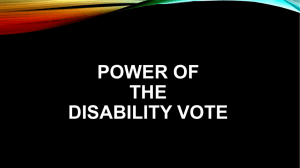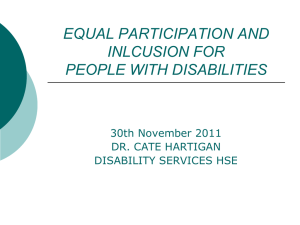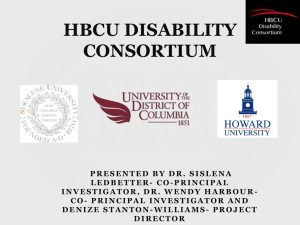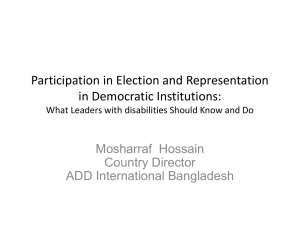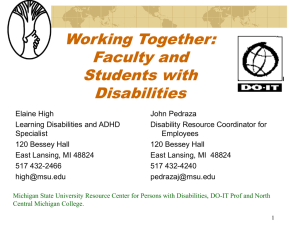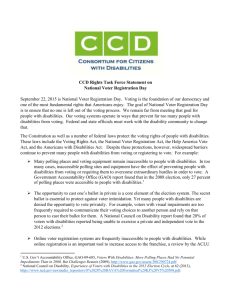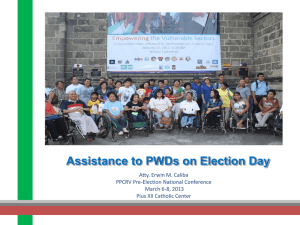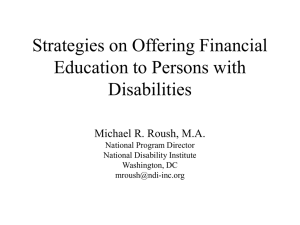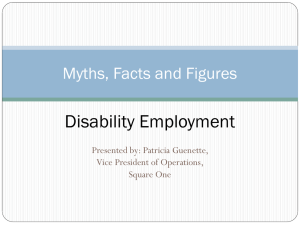to see the presentation from Kavin Truitts (ppt file).
advertisement
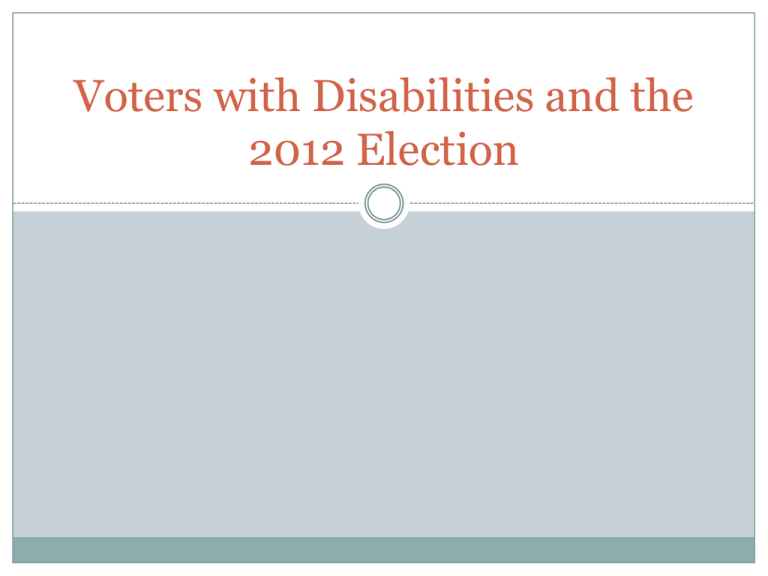
Voters with Disabilities and the 2012 Election Pre-Election Preparation In October and Early November prior to the election, Disability Rights Ohio travelled to 25 institutions across Ohio to give information to people with disabilities about their voting rights Facilities visited included: nursing facilities, assisted living facilities, intermediate care facilities for people with intellectual disabilities, state-operated developmental centers and psychiatric hospitals, and residential care facilities Election Day Hotline On the day of the election, Disability Rights Ohio operated a hotline to address voting issues, problems, or concerns of people with disabilities Received 15 calls throughout the day Many only needed advice or information Others required greater assistance and involvement – one even required emergency litigation Other Information Gathering Prior to the election, Disability Rights received numerous phone calls concerning voting rights through the normal intake process Disability Rights Ohio contacted 9 state-operated development centers and 3 state psychiatric hospitals after the election to inquire about voting experiences of people with disabilities Partnered with Self Advocates Becoming Empowered (SABE) to conduct an exit poll from voters with disabilities about their experience Problem #1 – Emergency Hospitalization Some individuals with disabilities who were unexpectedly hospitalized on Election Day faced significant barriers to voting Hospitalized within their county of residence: An individual may request the ballot before 3 pm on election day The Board of Elections is required to send two employees to the hospital to deliver the ballot, assist in completing it, and return it to the county board of elections In two cases, Disability Rights Ohio was able to use this system to promptly and effectively facilitate voting by hospitalized people with disabilities Voters Hospitalized Outside their County With only 6 state psychiatric hospitals, this is the more likely scenario The County Board is only required by state law to mail an absentee ballot to the voter In two cases, Disability Rights Ohio requested reasonable accommodations under the ADA for individuals to be allowed an equal opportunity to cast their vote In one case, the counties cooperated and were able to accommodate the hospitalized voter In the other case, accommodation was refused, and emergency litigation was required to force the Secretary of State to count the vote Problem #2 – Use of Signature Stamp The County Board of Election would not accept an application for an absentee ballot without a handwritten signature An individual was disabled and used a signature stamp After Disability Rights Ohio’s involvement, the Secretary of State allowed the stamp as a reasonable accommodation for the handwritten signature The State adequately resolved the problem, but only when it was brought to its attention Problem #3 – Obligations of State Facilities The Ohio Department of Developmental Disabilities (DODD) has an affirmative duty to inquire whether applicants for its services want to register to vote, and assist them in the process However, not all state facilities provided this information, especially if the individual had a developmental disability or an appointed guardian Problem #4 – Inaccessible Polling Locations One polling location was not accessible for people with wheelchairs Several other polling locations did not have sufficiently private machines for voters with disabilities

